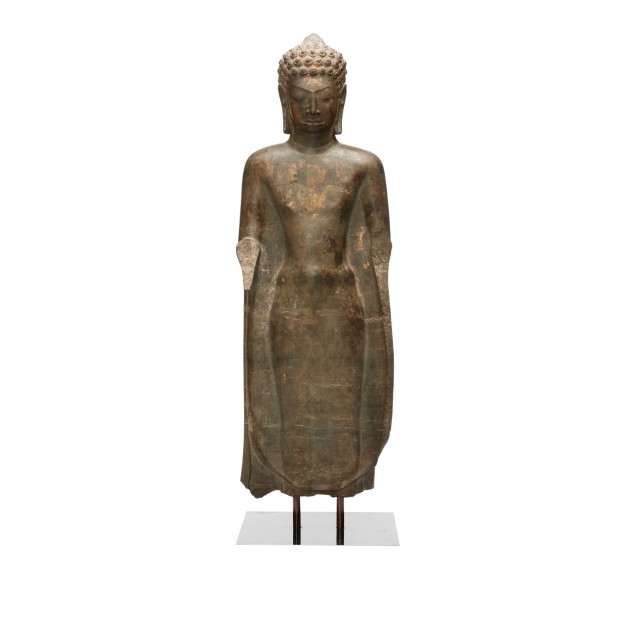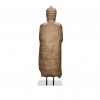
Buddha

Photography by Synthescape, Digital image © Asia Society

Photography by Synthescape, Digital image © Asia Society
Buddha
Late 7th-8th century
Thailand
Limestone with traces of gilding
H. 36 1/2 x W. 12 x D. 5 1/2 in. (92.7 x 30.5 x 14 cm)
Asia Society, New York: Mr. and Mrs. John D. Rockefeller 3rd Collection, 1979.75
Provenance
John D. Rockefeller 3rd, New York, NY; acquired from Spink & Son Ltd., Zurich, 1971.
The Asia Society, New York, NY, bequest of John D. Rockefeller 3rd, New York, NY, 1979.
Licensing inquiries
This Buddha exhibits many characteristics, originally developed in India, which indicate his perfected and supernormal nature. These include a bump atop the head signifying his expanded wisdom (ushnisha) and downcast eyes symbolizing his understanding and mastery of meditation. However, the frontality of this image, its squarish face, broad lips and nose, and prominent joined eyebrows characterize sculptures created in Thailand by the Mon. The Mon practiced Theravada Buddhism, which focused on the worship of the Buddha Shakyamuni, whom this sculpture might represent. Although the hands are crucial for a more precise identification, it is possible that both hands performed the gesture of teaching (vitarka mudra), in which the hand is held up with the thumb and the forefinger touching. This gesture, made with both hands, was often used in early representations of Shakyamuni from Thailand and is thought to represent his descent from Trayastrimsha Heaven, where he had gone to preach to his deceased mother.



